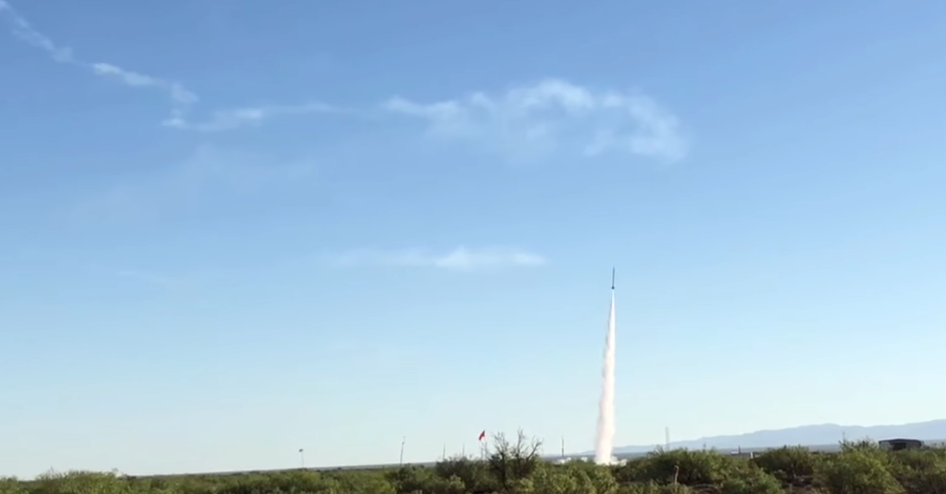Follow our progress here as we work towards our goal of launching a completely student research and developed (SRAD) hybrid rocket to 10,000 feet for the Intercollegiate Rocket Engineering Competition at the Spaceport America Cup in June 2019. More information about IREC and the SA Cup can be found one their website.
In this introductory post, we’ll first briefly touch on our experiences over the past two years, and then talk about where we plan to go over the next year. But first, what has happened so far this semester?
Where are we now?
SEDS-UCF has officially started up it’s third annual entry into IREC for the 2019 competition. This year, we’ve chosen to tackle some big engineering challenges, and we’ve got a lot of exciting research and development ahead of us (more on that later).
Our team structure is now official set. Tyler Knowles is our project lead for the year. Engineer Coordinator is Emily D’Elia and Operations Coordinator is Pedro Essaki. Director of Airframe is Ryan Ketzner, Director of Electronics is Ben Straw, Director of Propulsion is Alec Ortner, Director of Finance is Matt Knowles, and Director of Media is Micah Pody.
The various teams have decided on their goals for the year, assessed the challenges they’ll face, and are deep in into research and design to overcome those challenges. Every member on the team has been assigned a task, and we’re all hard at work to make this our best IREC entry yet!
How did we get here?
SEDS-UCF began creating IREC rockcets back in 2017. It was decided early on in our first year that we wanted to power our rocket with SRAD propulsion, and we ended up researching and designing a “sugar motor” – a solid rocket engine that contains a sugar-based propellant. We also developed systems for laying up our own carbon fiber airframe, and worked on an experimental microgravity payload. Unfortunately, our rocket never made it out to New Mexico for the competition; during a full-scale test flight in Alabama, we experienced a catastrophe at take-off:

Thankfully, we were persistent, and in 2018 we got it right, thanks in part to more rigorous testing, carefully controlled integration, and a new Systems team ensuring collaboration and compatibility between the various internal teams on the project. Despite a few setbacks, including our initial graphite nozzle failing destructively during a static fire and unforeseen machining delays forcing us to fly a dummy mass to meet competition requirements instead of our actual experimental payload, we successfully launched our SRAD sugar-motor and carbon fiber airframe at IREC 2018.

This amazing video is a good visual recap of IREC 2018.
Where are we going?
We’ve already reached our goal of 10,000 feet with a SRAD solid. So this year, we’re going to reach for that same mark, but with a hybrid motor. This is a rocket engine that utilizes a solid fuel grain, but liquid or gaseous oxidizer. This has a much greater level of complexity than a solid motor, where the fuel and oxidizer are already mixed into a solid grain before being loaded into the rocket. We will have to carry a solid fuel grain and a separate tank of our liquid oxidizer, and then through a system of valves, control the flow of that oxidizer into the combustion chamber to maintain stable combustion throughout flight.
Additionally, we’re looking into the possibility of deploying an airbrake mechanism to slow our ascent as we’re approaching our target altitude. Last year, we overshot our 10,000 foot target by over 4,000 feet. This year, through a combination of careful design, a throttling engine, and airbrakes, we hope to hit 10,000 feet exactly.
With the increased mechanical complexity comes the need for increased electrical capability. Previously we’ve had microcontrollers inside the payload to detect microgravity and actuate our experiment, but they were constrained by the 3U CubeSat form factor and 8.8 pound target weight. For the first time, this years rocket will feature an integrated flight computer, with a comprehensive sensor array, power distribution throughout the rocket for the computer systems, actuators, cameras, and payload, and even a radio downlink back to our ground station for real-time telemetry!
As for our experimental payload, we’re continuing with the experiment of precious years, since it has still never been flown at competition. However, we are redesigning the payload this year to be more efficient, more reliable, and to take full advantage of our new flight computer.
As you can see, we’ve got a lot of work ahead of us. Keep an eye on this website for exciting updates from our various teams, especially as we start transitioning from research into design. And if you’re able to do so, please consider donating to our GoFundMe, linked in the sidebar.
Ad astra.
– The SEDS-UCF 2019 IREC Team